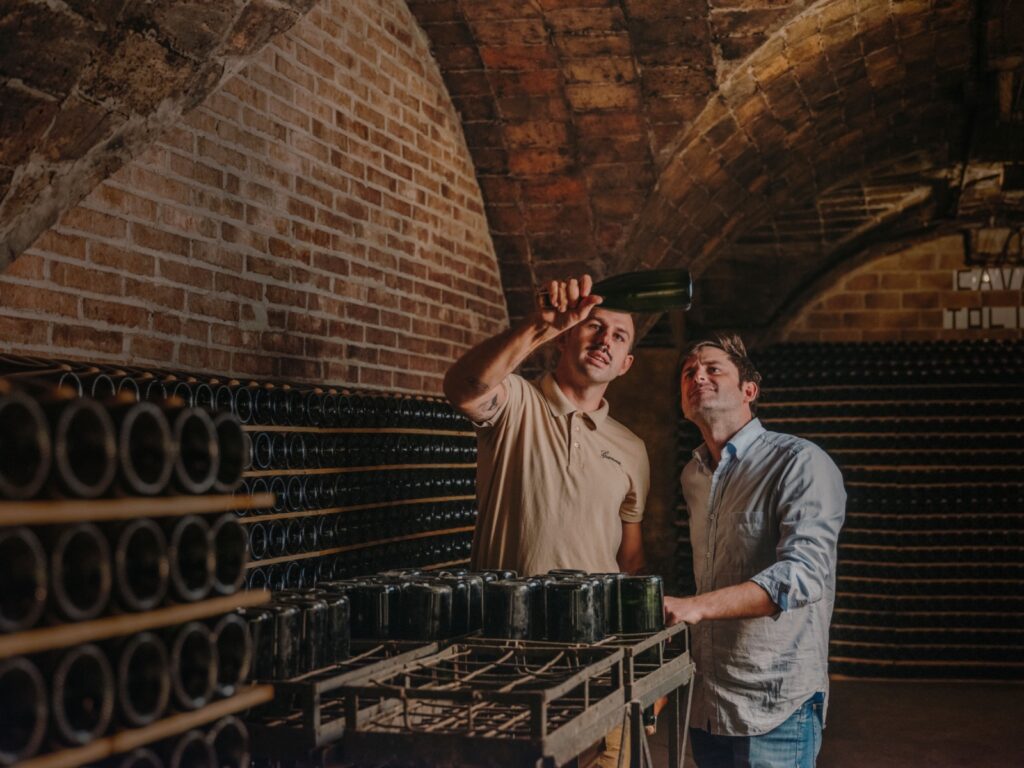A short, sunlit drive from Barcelona leads into the heart of Penedès, Spain’s cradle of sparkling wine.
Here, in a landscape framed by the Montserrat Mountains, sits Gramona, one of the most famous names in Spanish winemaking. For over 140 years, this family-run estate, which started shipping wine to the Spanish colonies in the late 19th century, has quietly redefined Spanish sparkling wine, making it renowned worldwide for its elegance.
– Featured image credit: Gramona –
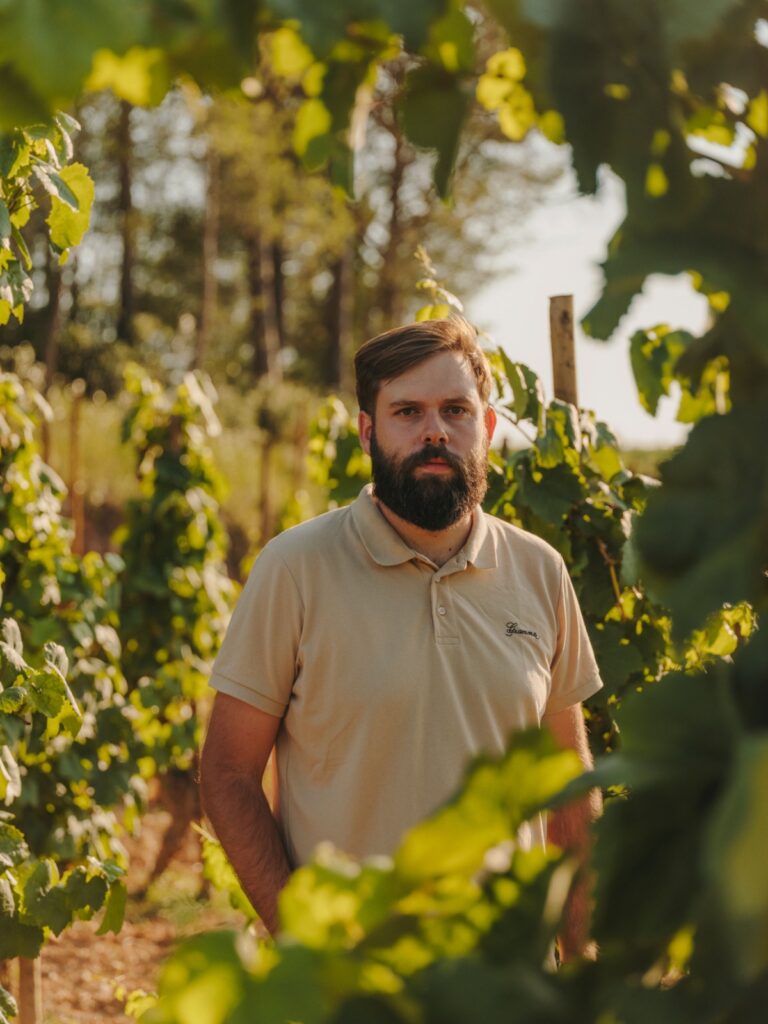
A Family Affair
The story of Gramona began in 1850, when Josep Batlle purchased the first vineyards. His descendants would build upon that legacy with equal measures of patience and ambition. Today, the sixth generation — cousins Roc and Leo Gramona, aged 32 and 34 respectively — are guiding the house into a new era. Their wines are expressive and deeply rooted in their terroir. Roc oversees the vineyards, while Leo manages marketing. Together, they balance innovation with tradition, ensuring that each bottle reflects both place and purpose.
The family first used the traditional method of disgorgement to produce sparkling wines in 1921. The year 2021 marked 100 years since the first sparkling vintage was produced. Today, four generations of the family remain actively involved, with a production of over 400,000 bottles.
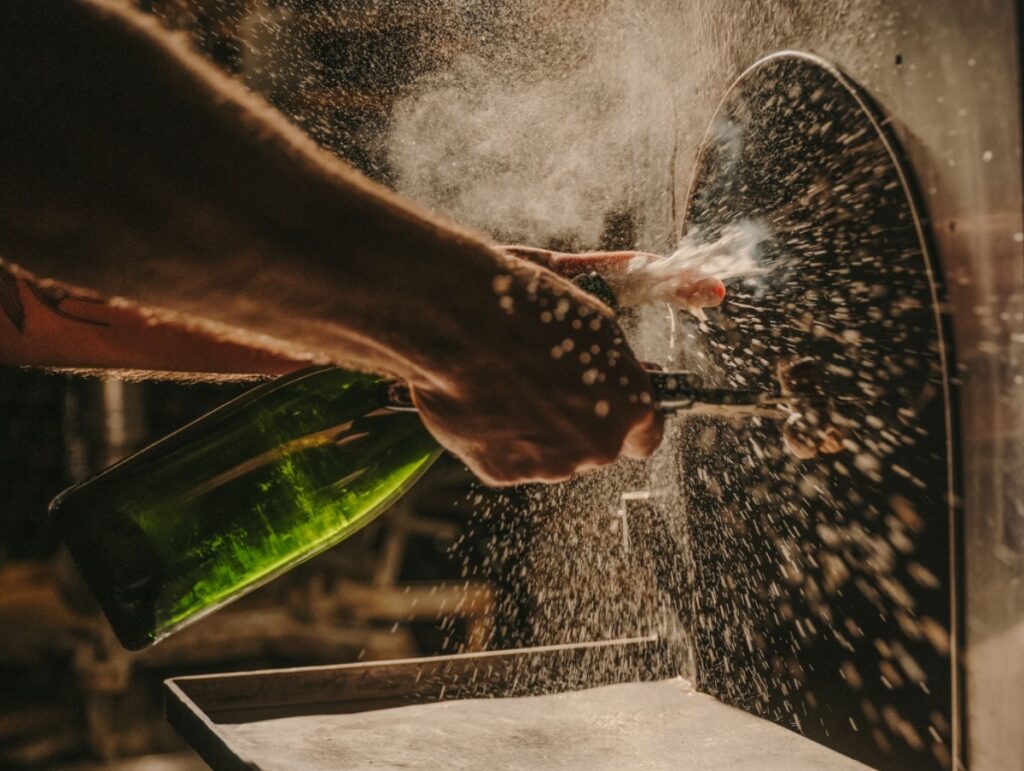
Sustainability in Action
For Roc and Leo, sustainability is part of Gramona’s DNA. Since 2005, the estate has systematically worked toward sustainability with energy efficiency assessments. Measures include using LED lighting (2014), installing photovoltaic panels, reducing packaging, and using renewable energy (2017). Calculation of their carbon and water footprint was carried out in 2020.
Gramona actively participates in the European MAFSURE project on adapting agriculture to climate change, an initiative that began in 2021. The vineyards practice keyline planting, a method that slows water cycles, promotes water retention, and prevents erosion, helping to increase biodiversity.
In the vineyards, Roc has moved away from international varieties in favor of local grapes that express the true character of Penedès. Historical grape varieties such as Xarel-lo, Macabeo, Parellada, Malvasia, Garnacha Tinta, Monastrell,and Xarel-lo Vermell are used. Together, these grapes deliver depth, freshness, and a distinctly Mediterranean elegance.

The Corpinnat Revolution
In 2019, Gramona made a bold decision: to leave the Cava DO and join Corpinnat, a collective of eleven wineries at the time (now nineteen) dedicated to crafting premium sparkling wines under some of the strictest quality standards in the world.
The name Corpinnat — meaning “born in the heart of Penedès” — represents the collective brand in the European Union, aiming to create the finest sparkling wine Spain can produce. Every bottle must come from 100% organically grown, hand-harvested grapes, vinified on the estate, and aged for a minimum of 18 months, with at least one cuvée aged over 60 months.
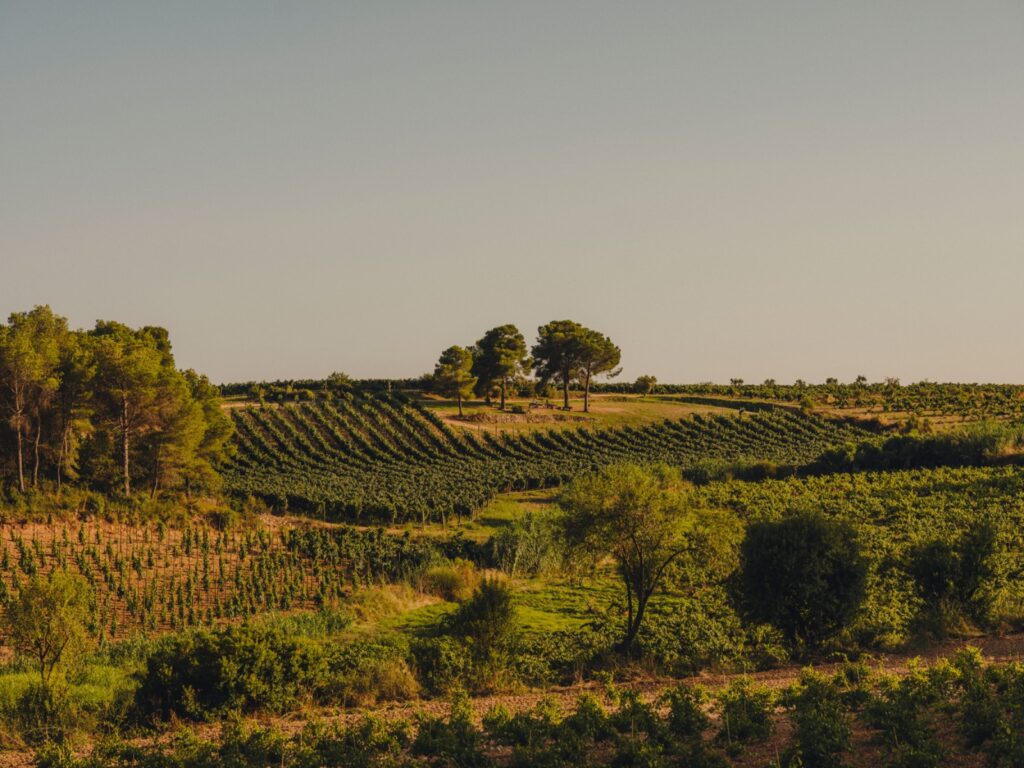
“Corpinnat is the future of Spain,” says Mauro Gall, Gramona’s Export Manager. “It’s not just about making exceptional sparkling wine — it’s about doing so responsibly. The methods are sustainable, and the results speak for themselves.”
Like Champagne, Corpinnat wines are made using the traditional method, where a second fermentation occurs in the bottle. This process develops the creamy texture and complexity that have made Gramona’s wines some of the most acclaimed in Spain. All Corpinnat wineries undergo annual audits to ensure standards are maintained. A Corpinnat winery can only make and market Corpinnat sparkling wine.
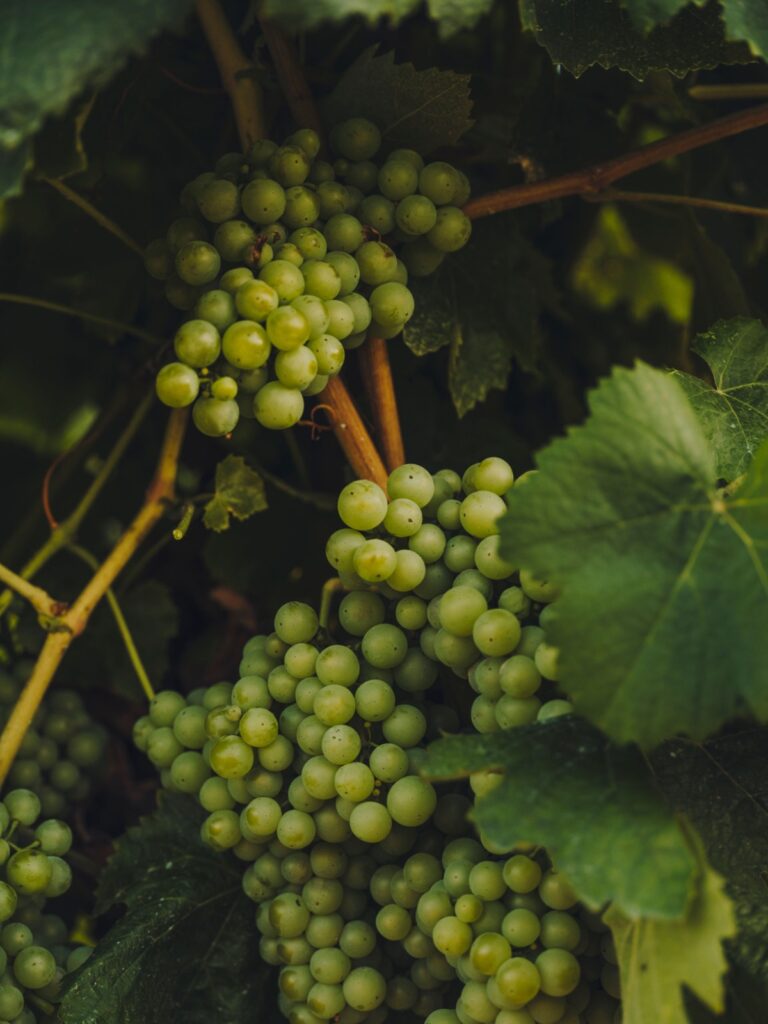
Legacy with Purpose
From its origins in the 19th century to its modern, sustainable vision, the Gramona family embodies the elegance of evolution. Gramona wines are consistently rated highly in the Peñín Guide, the most comprehensive Spanish wine guide, illustrating the value this winery brings to Spain. The estate’s longevity rests not on nostalgia, but on its ability to adapt, respect the land, and quietly pursue excellence. The Gramona family has shown that true heritage is not about holding on — but about moving forward.
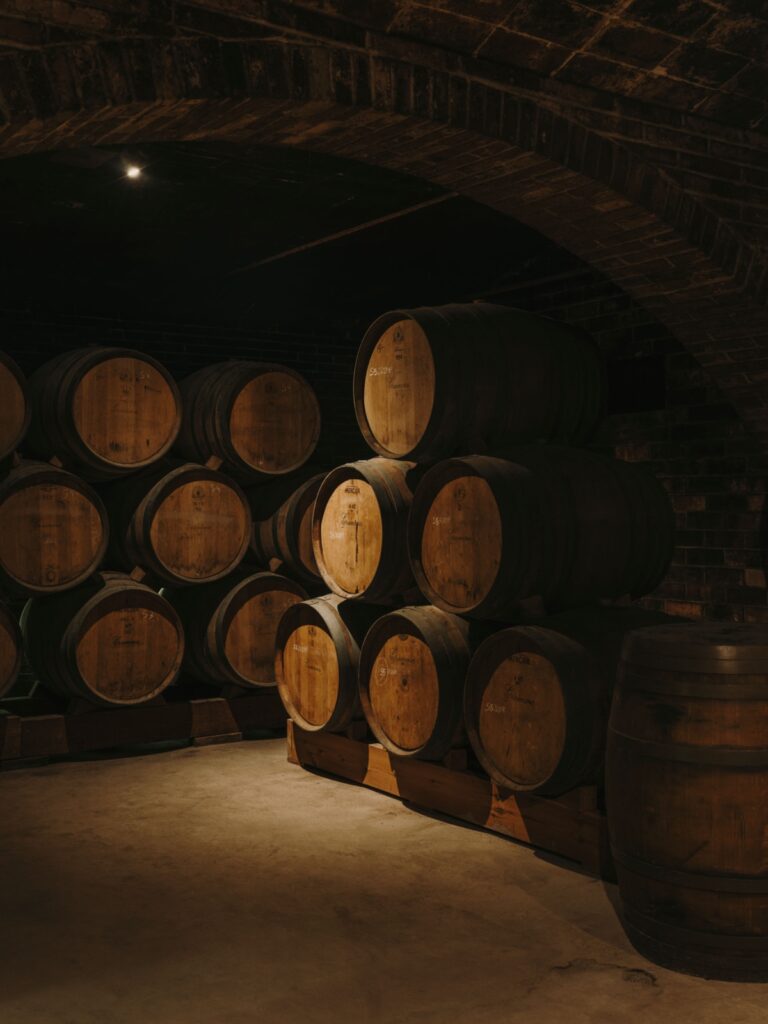
Wine Notes
Gramona Roent Rosé 2022, Corpinnat
A blend of Garnatxa Negra and Pinot Noir. Bright salmon pink in color, this Rosé is aged over 18 months. It displays lovely aromas of black and red fruits and finishes with a refreshing palate and crisp acidity.
Imperial 2018, Corpinnat
Gramona’s flagship wine. A blend of Xarel-lo, Macabeu, Chardonnay, and Parellada, this wine is clean, with aromas of green fruit, herbs, a hint of summer Provence, and a splash of strawberries and red fruit. The Imperial is aged on average 5 years on the lees. The Xarel-lo grape provides high acidity and a fine, elegant finish.

Gramona Lustros Font de Jui 2016, Corpinnat
A blend of Xarel-lo and Macabeu. The 2016 vintage is considered exceptional and pairs beautifully with dishes like peas and cod. First produced in 1951 from the Font de Jui estate, it is aged over 6 years.
Gramona Cellar Batlle 2015, Corpinnat
A blend of Xarel-lo and Macabeu. This wine offers youthful citrus and green stone notes. It will age well, developing a crème brûlée texture; until then, it can be enjoyed for its clean, fresh style. The Cellar Batlle honors the third generation that created the union between the Gramona and Batlle families. It is Gramona’s Prestige Cuvée, produced in limited quantities.
